Many of us are familiar with the ancient story of Abraham and his desire to have a son. In the Biblical account of his story, Abraham first had a son with his ‘handmaiden’ Hagar. This first-born son was named Ishmael. Abraham’s second son, Isaac, was declared the ‘son of promise.’ The Jews today claim decent from Abraham through this second son, Isaac. Few people today know what happened to the descendants of Ishmael. It is often assumed that they simply became the Arabs of the Middle East, but to most of us, our knowledge stops there. The Bible gives us the following record:
“But as for Ishmael, I have heard thee: behold I have blessed him, and will make him fruitful, and will multiply him exceedingly; twelve princes shall he beget, and I will make him a great nation.” Genesis 17:20
“Now these are the generations of Ishmael, Abraham’s son, whom Hagar the Egyptian, Sarah’s handmaid, bore unto Abraham: And these are the names of the sons of Ishmael, by their names, according to their generations: The firstborn of Ishmael, Nebajoth, and Kedar, and Adbeel, and Mibsam, and Mishma, and Dumah, and Massa, Hadad and Tema, Jetur, Naphish and Kedmah. These are the sons of Ishmael, and these are their names, by their towns and by their encampments; twelve princes according to their nations.” Genesis 25:12-16
In 1932 David J. Gibson set out to map the chronologies of the Bible, and in doing so he was faced with the puzzle of what happened to the sons of Ishmael. In order to complete his chronology, he began a life-long search for answers to this question. Ten years after his death, his son Dan Gibson took up the challenge and flew to the Middle East to continue the search. That search has now lasted over thirty years and has led him to many of the remote parts of Arabia. Dan has lived in the Empty Quarter of Arabia, climbed the mountains of Yemen, lived among the Howietat of southern Jordan, and crossed the burning deserts of Saudi. He has also spoken to many of the great archaeologists who work in the Middle East and has examined countless books and theses, pursuing answers to this question. Below is a brief summary of what Dan’s father started and what Dan has continued.
The Muslim understanding of how the Bedouin tribes originated is outlined in the chart below. Some Bible scholars identify the Muslim Kahtan as the Biblical Joktan (see the Founding of the Nations chart).
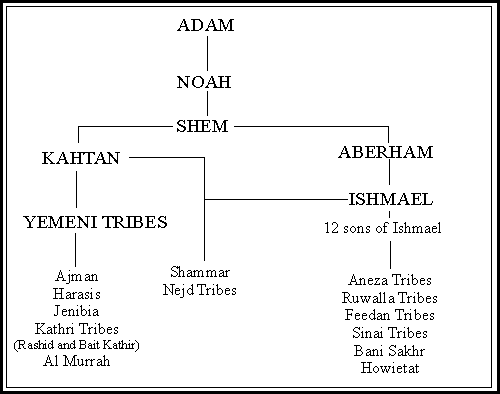
Muslim chart from Adam to Arabian Tribes. Keohane, Alan, 'Bedouin, Nomads of the Desert', Kyle Kathi Ltd., London, 1994
The Biblical record of Ishmael gives us the names of the 12 sons, but no clue as to how they might be connected to the modern Bedouin Tribes. This list is found in Genesis 25 and is later repeated in I Chronicles 1:29-33.
“And these are their generations: the first-born of Ishmael, Nebaioth, then Kedar, and Adbeel, and Mibsam, Mishma, and Dumah, Massa, Hadad, and Tema, Jetur, Naphish, and Kedemah. These are the sons of Ishmael.”
These sons eventually took wives, had children, and through these children, tribes were formed. These tribes made up the nations that dwelt from Havilah to Shur, and from Egypt to Assyria. These descendants of Ishmael were not the sole tribes in the Arabian Desert. Other tribes emerged from other sources. Some of these became the people of South Arabia and others also wandered and settled in Arabia. For a chronology, see The Founding of the Nations chart.
We will examine the twelve sons of Ishmael and try and determine what might have happened to them below.
Nabajoth
More information is known about Ishmael’s eldest son, Nabajoth, than any of the others. In the Bible, Qedar and the tribe of Nebayot were renown for sheep raising (Isaiah 60:7). Their names are frequently found together in Assyrian records.
Nabajoth is specifically mentioned by the Jewish historian Josephus, who identified the Nabataeans of his time with Ishmael’s eldest son. He claimed that the Nabataeans lived through the whole country extending from the Euphrates to the Red Sea, and referred to this area as ‘Nabatene,’ or the area that the Nabataeans roamed in. Josephus goes on to say that it was the Nabataeans who conferred their names on the Arabian nations (Jewish Antiquities I.22,1). Josephus lived and wrote when the Nabataeans were in existence, and supposedly, he obtained his information directly from the Nabataeans themselves. These Nabataeans spoke and wrote an early form of Arabic and thus they were often referred to as ‘Arabs’ by Greek and Roman historians.
Previous to Josephus’ report, Assyrian records tell us of King Ashurbanipal (668-663 BC) who was fighting with the ‘Nabaiateans of Arabia.’ Then in 703 BC a group of Chaldaeans and neighboring tribes rebelled against Sennacherib, the Assyrian ruler. The ancient records of Tiglath Pilezeer III list, among the rebels, the Hagaranu (possibly the descendants of Hagar, the mother of Ishmael), the Nabatu (very possibly the descendants of Nebayoth, the eldest son of Ishmael) and the Kedarites (descendants of Ishmael’s second son). According to these records, the tribes fled from Assyria into the Arabian Desert and could not be conquered.
The Assyrian kingdom eventually divided into the rule of two brothers, one the King of Babylonia and the other the King of Assyria. In 652 BC, conflict broke out between these two brothers, and in support of the Babylonian king, the Kedarites invaded western Assyria. As described in the records of Esarhaddan, the Kedarites were defeated and fled to Natnu, the leader of the Nabayat, for safety. Later the Kedarites and the Nabayat attacked the western boarders of Assyria but were again defeated. After their defeat, Natnu’s son, Nuhuru was declared the leader of the Nabatu.
Three hundred years later the Zenon papyri from 259 BC mention that the Nabatu were trading Gerrhean and Minaean frankincense, transporting it to Gaza and Syria. They transported their goods through the Kedarite centers of Northern Arabia, Jauf, and Tayma. Early Nabataean pottery has also been found in locations on the Persian Gulf, along the coasts of Saudi Arabia, and Bahrain: Tuwayr, Zubayda, Thaj, and Ayn Jawan.
There are also ancient references to the Nabatu living along the western edges of the Arabian Peninsula and in the Sinai. These Nabatu were pirates who sailed the Red Sea, plundering trading vessels. Later, they established bases in several seaports, including the port city of Aila (modern day Aqaba), which is only 120 km from present day Petra.
While most of us think of the Nabataeans as people who transported goods in the desert by camel caravan, it has become increasingly evident that the Nabataeans were also a sea trading people.
It is quite clear from the historical records that in 586 BC, as the Edomites began a gradual migration north into Jewish lands that had been emptied by Nebuchadnezzar, the tribes of Arabia also began to move northward. From their port city of Aila (Aqaba), it was only a short move inland for the Nabatu to occupy the quickly emptying land of the Edomites, eventually making it the heart of the Nabataean Empire.
Although the chronology is not yet clear, it appears that some Edomites remained behind. Those that emigrated into Judea became known as “Idumaeans.” These were some of the people that opposed the Jews during the rebuilding of the temple at Jerusalem under Ezra, and later, the rebuilding of the city walls of Jerusalem under Nehemiah.
In time, the Nabataeans built an impressive civilization based on merchant trade. Their capital was originally the city of Petra, located deep in the sandstone mountains of southern Jordan. Later, the city of Bostra in southern Syria also functioned as a royal city. The Nabataeans built several other cities in the Negev, in Northern modern-day Saudi Arabia, and in other parts of modern-day Jordan. In 106 AD, the Nabataeans surrendered their empire to the Romans and eventually their Nabataean distinctiveness disappeared.
Kedar
As we have already mentioned, the sons of Kedar became known as the Kedarites. The Kedarites were the main military power of the sons of Ishmael. Isaiah speaks of Kedar’s “glory and her gifted archers” (Isaiah 21:16-17). Ezekiel 27:21 associates Arabia with all of the princes of Kedar, suggesting a confederation under their leadership.
The Kedarites were in constant conflict with the Assyrians. The Assyrians, Neo-Babylonians, Persians, and even the Romans realized the importance of taking control of the commercial routes in northern Arabia that were under the dominion of the Kedarites (and later the Nabataeans).
Nehemiah’s opponent, ‘Geshem the Arab,’ has been identified as one of the kings of Kedar from the mid fifth century BC, based on a number of North Arabian inscriptions.
Regarding their religion, Assyrian inscriptions tell us that Sennacherib captured several Arabian deities in the Kedarite city of Dumah. The chief deity was Atarsamain, or the morning star of heaven–the counterpart of Mesopotamian Ishtar. The tribal league led by the Kedarites was known as “the confederation of Atarsamain,” and their cult was led by a series of queen-priestesses in Dumah. The rest of their pantheon of gods consisted of Dai, Nuhai (Nuhay), Ruldai (Ruda), Abirillu, and Atarquruma. Rock graffiti in the Thamudic language reveals that Ruda was known as the evening star, and Nuhay was the sun-god, and they were worshiped in addition to Atarsamain ‘the morning star.’ Herodotus, in the fifth century BC, identified two deities worshiped among the Arabs: a fertility god called Orotalt (perhaps Ruda, as identified by Macdonald in North Arabia in the First Millennium BC, 1360), and a sky goddess know as Allat (Herodotus III, 3). Later, Allat would be referred to in the masculine form as Allah.
The Kedarites are mentioned in several passages in the Bible, always as nomads. Psalm 120 is a cry of distress. The speaker has fled and lives in a place called Meshech in the tents of the Kedarites. In Isaiah 42:11, Kedar is mentioned in a song of praise. In Jeremiah 2:10 the children of Israel are advised to check with Kedar and see if it is an ordinary thing for a people to forsake their gods and turn to others. Jeremiah 49:28 presents us with a prophecy against Arabia (Hazor and Kedar), foretelling that Nebuchadnezzar, a king of Babylon, will destroy them. Ezekiel 27:21 is a lament over the city of Tyre. This passage mentions that Arabia, and the princes of Kedar, traded lambs, rams, and goats with Tyre
In the middle of the fourth century BC the Kedarites seem to fade from history as the Nabataeans come to the forefront.
Adbeel
The tribe of Adbeel is often identified with the people in the land of Arubu who became subjects to Tiglath Pileser II (744-727 BC). Their chieftain was called Idibi’ilu and he operated as the Assyrian king’s agent on the boarders of Egypt. His tribe was said to have dwelt far away, towards the west. From this reference, some historians have thought that the tribe of Adbeel lived in the Sinai.
Mibsam & Mishma
Some historians have wondered if the descendants of Mishma founded the villages around Jebel Misma. It is thought that these two tribes may have intermarried with the Simeonites and disappeared from history as a separate entity (I Chronicles 4:24-27).
Dumah
Dumah is mentioned in the Biblical records as a city in Canaan (Joshua 15:52). It is also associated with Edom and Seir in Isaiah 21:11.
Dumah is generally identified by historians with the Addyrian Adummatu people. Esarhaddon’s records relate how his father Sennacherib stuck against Adummatu in an attempt to subdue the Arabs. Sennacherib captured their king, Haza’il, who is called “King of the Arabs.” Kaza’il is also referred to in one inscription of Ashurbanipal, as “King of the Kedarites.”
From a geographical standpoint, Adummatu is often associated with the medieval Arabic Dumat el-Jandal, which was in ancient times a very important and strategic junction on the major trade route between Syria, Babylon, Najd, and the Hijaz area. Dumat el-Jandal is at the southeastern end of Al Jawf which is a desert basin and often denotes the whole lower region of Wadi as Sirhan, the famous depression situated halfway between Syria and Mesopotamia. This area has water and was a stopping place for caravans coming from Tayma before proceeding on to Syria or Babylonia.
This strategic location effectively made the Dumah the gatekeepers to north Arabia. The oasis in this territory was the centre of rule for many north Arabian kings and queens, as related to us in Assyrian records.
Massa
The records of Tiglath Pileser III mention the inhabitants of Mas’a and Tema, who paid him tribute. On the summit of Jebal Ghunaym, located about 14 kilometers south of Tayma, archeologists Winnett and Reed discovered some graffiti script which mentions the tribe Massa in connection with Dedan and Nebayot. This script refers to a war against Dedan, a war against Nabayat, and the war against Massaa. Therefore, these tribes appear to have been close to each other at the time. The tribe of Massa is possibly connected to the Masanoi of North Arabia as mentioned by Ptolemy, (Geography v18, 2).
Those holding to the theory that the Children of Israel crossed the Red Sea into Arabia identify El Maser as the place where the Israelites murmured (Exodus 17:7, Deut. 6:16, 9:22, 33:8).
Hadad
Some historians speculate that this tribe may have become known as the Harar or the Hararina people who lived near the mountains northwest of Palmyra. It is also interesting to notice that there is a Hadad tribe in Arabia. Most of the Hadads are now Christians and are located throughout the Levant (for example: Jordan, Syria, Lebanon, Palestine). The modern day Hadadine tribe is also related.
Tema
Teyma is usually associated with the ancient oasis of Tayma, located northeast of the Hijaz district, on the trade route between Tathrib (Medina) and Dumah. Between Tayma and Dumah is the famous Nafud desert. It is thought that the present city of Tayma at the southwestern end of the great Nafud desert is built on the remains of the ancient oasis by the same name.
Tiglath Pileser III received tributes from Tayma, as well as from other Arabian oases. The Assyrians recorded how a coalition headed by Samsi, queen of the Arabs, was defeated. The coalition was made up of Massaa, the city of Tayma, the tribes of Saba, Hajappa, Badana, Hatti, and Idiba’il, which lay far to the west. Once defeated, these tribes had to send tribute of gold, silver, camels, and spices of all kinds.
The Assyrian king Sennacherib named one of his gates in the great city of Nineveh as the Desert Gate, and records that “the gifts of the Sumu’anite and the Teymeite enter through it.” From this we can recognize Teyma was regarded as an important place.
Around 552 BC Nabonidus (555-539 BC) king of Babylon and father of biblical Belshazzar (Daniel 7:1) made the city of Tayma his residence and spent ten of the sixteen years of his reign there.
During the Achaemenid period, Tayma probably became a seat of one of the Persian emperors. However, by the first century BC, the Nabataeans began to dominate Tayma, and it slowly became a part of their trading empire.
Isaiah 21:13-14 invites the people of Tayma to provide water and food for their fugitive countrymen, in an apparent allusion to Tiglath Pileser’s invasion of North Arabia in 738 BC. Jeremiah 25:23 is a prophecy against the oasis city. In Job 6:19-20, Job laments his fall from wealth, and comments that the troops of Tema and the armies of Sheba (Yemen) had hoped for plunder, but now Job had nothing.
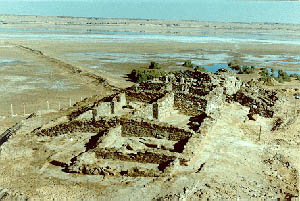
Tayma is an oasis with a large telll with many buildings built on top of older ruined buildings.
Jetur, Naphish, Kedemah
To date I have found nothing written by the ancient historians about these tribes.



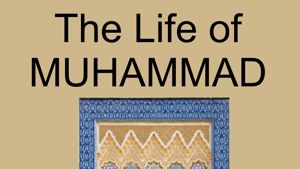




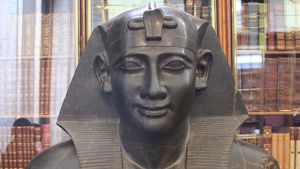
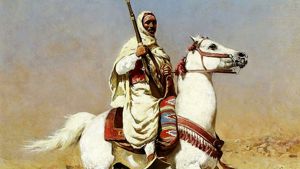

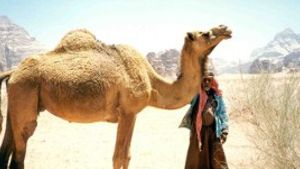

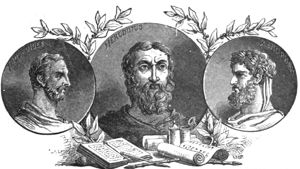
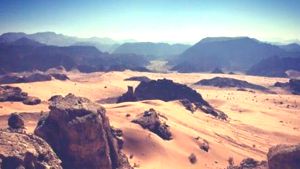

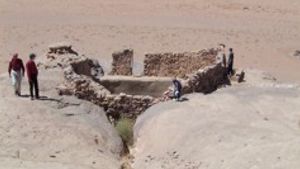
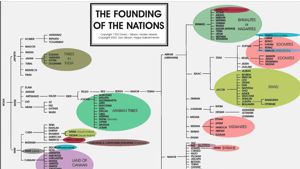
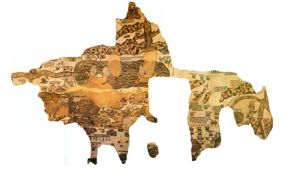
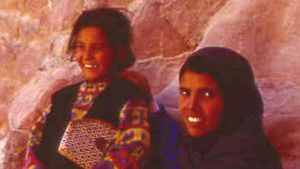
Page Discussion
Membership is required to comment. Membership is free of charge and available to everyone over the age of 16. Just click SignUp, or make a comment below. You will need a user name and a password. The system will automatically send a code to your email address. It should arrive in a few minutes. Enter the code, and you are finished.
Members who post adverts or use inappropriate language or make disrespectful comments will have their membership removed and be barred from the site. By becoming a member you agree to our Terms of Use and our Privacy, Cookies & Ad Policies. Remember that we will never, under any circumstances, sell or give your email address or private information to anyone unless required by law. Please keep your comments on topic. Thanks!